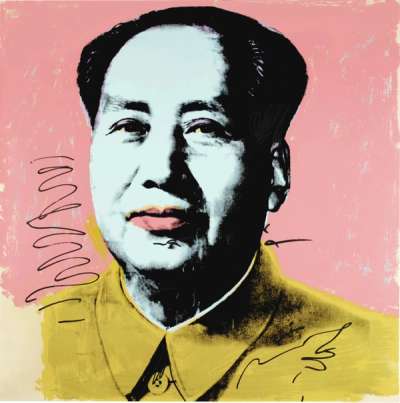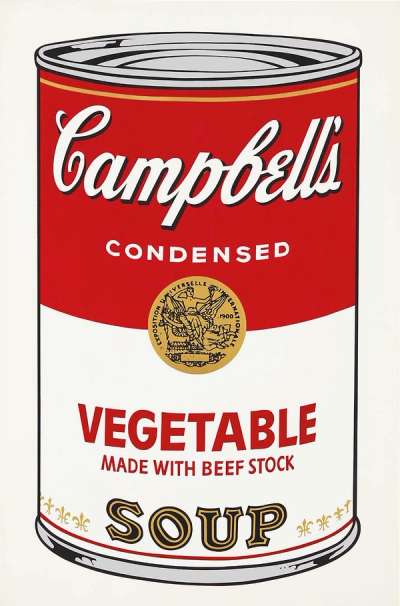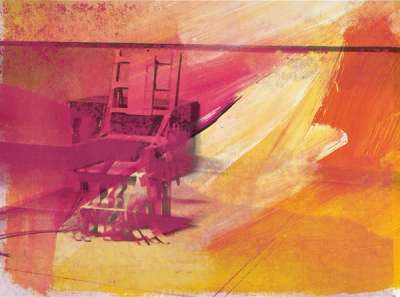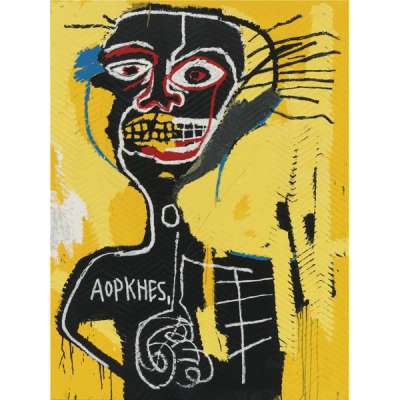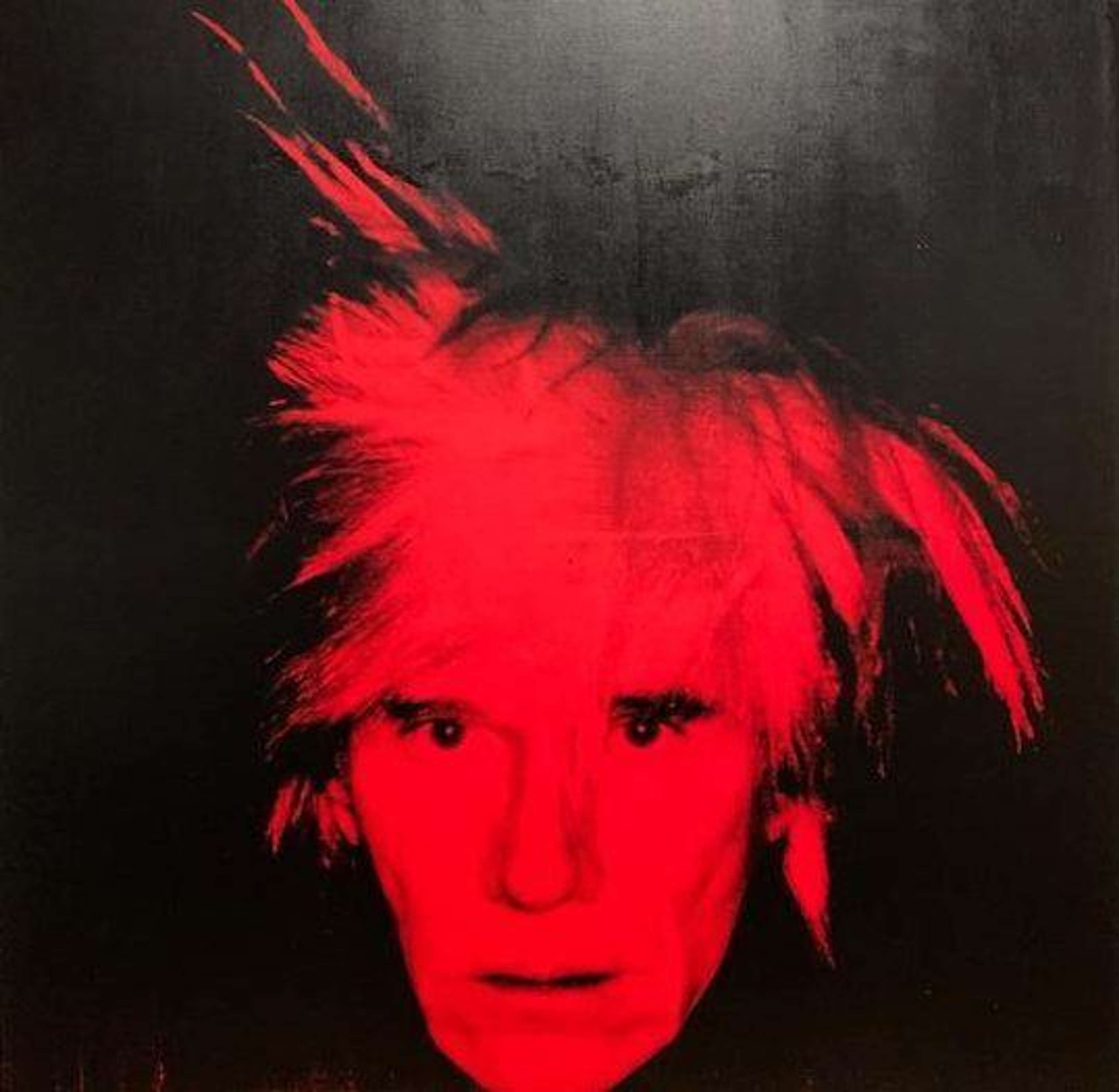I Authenticated Andy Warhol: Art Authentication 101

 Electric Chair (F. & S. II.74) © Andy Warhol 1971
Electric Chair (F. & S. II.74) © Andy Warhol 1971MyPortfolio
Read Chapter One of Richard’s Polsky’s exclusive mini series on the world of Andy Warhol authentication.
Chapter One
As an art authenticator, it seems like once a year someone hires me and then ends up wanting their money back — and the reason why is always the same. It’s hard to accept that your painting is a fake. Besides a jolt to the ego, the real issue is they now won’t be able to sell their picture for a lot of money. And that’s what lies at the core of the art authentication business.
Back in 1978, when I first got involved in the art world, people bought art because they wanted to live with it. You developed friendships with dealers, hung out at artists’ studios, and visited the world’s finest museums. You derived joy and satisfaction from your relationships and travels. Of course, you intuitively knew if you bought a quality painting chances were it would appreciate. But turning a profit was not the primary motivation.
Then the game changed. Some say it happened post-2008. Others trace it back to the late 1980s. Regardless, all you hear about now are financial strategies. Some buyers don’t even bother to take delivery of their art. They immediately warehouse it — so it can be sold more conveniently when the timing is right. Whether you’re a major player who bankrolls guarantees for Sotheby’s, or just a mere speculator looking to flip a recent purchase, everything comes down to investment. Over the years, the biggest change I’ve witnessed in the art scene is how it’s transitioned from the “art world” to the “art market.” That and the number of forgeries which continue to trickle out.
 Image © Christie's / Salvator Mundi © Leonardo Da Vinci circa 1500
Image © Christie's / Salvator Mundi © Leonardo Da Vinci circa 1500How I came to meet Alice Cooper and his Warhol painting
We’re not talking about the high-profile purported Leonardo Salvator Mundi, which sold for an obscene $450 million at Christies, in 2017. Nor are we talking about the other extreme — the “trash” markets of counterfeit Chagalls, Miros, and Dalis. I’m referring to the absurd number of phony Warhols, Basquiats, Harings, and others which clog the online sales and auction platforms. A day doesn’t go by where multiple regional auction houses somewhere on the planet are offering one or more blatant fakes. The bait is always the same. A work bears an affinity to a famous artist and is listed with a ludicrously low opening bid. A case of magical thinking takes place. A potential buyer wants to believe he’s spotted an anomaly and decides to pounce. His logic is, It’s probably not real. But what if it is? I’m going to make a killing! As an art authenticator, I’m often hired to look into these “bargains.” Alas, these adventures always end badly.
Yet every now and then, I’m shown a picture that at first glance appears to be authentic. Such was the case in 2017, when I received an inquiry from a Los Angeles collector named Ruth Bloom. During the 1980s, Ruth owned a gallery in Santa Monica called Meyers/Bloom, which eventually became Ruth Bloom Gallery. She and her husband, the Hollywood attorney Jake Bloom, were also collectors. One day, the Blooms were having dinner with rock world talent manager Shep Gordon. Among Mr. Gordon’s many high-profile clients was Alice Cooper, mentioning that Alice owned an Andy Warhol painting that he was interested in selling. The problem was the painting had never been authenticated. Nor did it appear in the Andy Warhol Catalogue Raisonné (a compendium of virtually every known painting by the artist). Shep’s question to Ruth was whether she knew of anyone who could authenticate the painting and help bring it to market.
 Electric Chair (Red) © Andy Warhol 1964
Electric Chair (Red) © Andy Warhol 1964A genuine Warhol painting? The role intuition plays
When Ruth Bloom found me, she realized we actually knew each other from her days as a gallerist in Santa Monica.
Once we caught up, she came straight to the point, “Can you help us authenticate Alice’s painting?”
“Sure,” I replied, “I need to see digital photos of the work and some information on its backstory.”
Art authentication is based on two things: What does an object look like and what is its backstory. Of the two, “what does an object look like” is the most important. That’s because if the work doesn’t check out visually, then there’s no point researching its history.
When I examine a picture, I always experience an initial jolt. Having seen many Warhols over the years, I have a gut level reaction when I’m shown a purported example. It’s analogous to ordering a cheeseburger medium-rare with grilled onions, once a week for years, at your favorite dive. If one day your server arrives with your sandwich minus the grilled onions, I guarantee you’re going to notice. The same holds true for a Warhol canvas where something appears off.
Basically, I want to know how a painting relates to similar examples by the artist which are known to be genuine. In order to make that determination, I had to become a connoisseur. If you want to become an art expert, you have to look a lot. It’s similar to becoming a wine connoisseur; you have to drink a lot. In 1996, when Irving Blum sold his historic group of 32 Campbell’s Soup Cans to the Museum of Modern Art for an alleged $15 million, you better believe I went to see them within a year of their hanging. I wanted to closely examine their hand-painted quality (just before Warhol switched to his photosilkscreen format) and search for quirks like visible pencil lines. I also wanted to bask in their aura, trying to absorb what Warhol’s early work “felt” like.
Besides having seen numerous Warhols over the years, I’ve also owned his work. When you live with a painting, even though you may only glance at it for five seconds at a time, you are constantly seeing different things each time you look. For example, I once owned a “baby” Mao painting (based on a portrait of Chairman Mao in his “Little Red Book”). It was Warhol’s first body of work where he added hand-painting to each canvas’s silkscreened imagery. Every time I looked at my Mao, I noticed something knew or felt something fresh. These observations accumulate over the years until they reach a critical mass where you ultimately understand the artist’s working methods. This is part of what an art authenticator relies on when it’s time to make a decision.
Assembling an extensive reference library is also a key component of the art authentication business. The best approach is not to acquire every known book on a given artist — just those which can help you with your research. In many cases, you acquire these books for their illustrations, rather than their critical essays. The number of Warhol biographies, exhibition catalogs, and coffee table books is staggering. Many of them are rare because art publications are often printed in small quantities. Yet, despite their expense, you cannot underestimate the value of these research tools.
Andy Warhol's Catalogue Raisonné: A quick overview
The cornerstone of an Andy Warhol library is the Andy Warhol Catalogue Raisonné — an illustrated compendium of virtually every known Warhol painting. The Warhol catalogue is outstanding. However, any catalogue raisonné by its very nature is not perfect. There are always paintings which slip between the cracks that never make it into each volume. This is especially true for Andy Warhol. During the early days of the Factory (Warhol’s studio), record keeping was haphazard. Not only was there a dearth of invoices, but paintings were traded, given away, and taken without permission. While many of these works were recorded — specifically by his dealer Leo Castelli — a fair number escaped detection. As I was about to learn, Alice Cooper’s red Little Electric Chair was one of them.
The other half of the equation of what’s necessary to authenticate a painting is the work’s provenance. Provenance is crucial because it allows you to trace the history of a painting. In a perfect world, a painting would come with complete documentation. It might have an original gallery invoice, preferably from a known Warhol dealer (bonus points for a gallery label on the verso of the work). The painting might also be illustrated in an exhibition catalog. Another positive scenario would be its inclusion in an auction catalog from Sotheby’s or Christie’s.
Barring any of the above outcomes, an art authenticator is stuck with the owner’s explanation of the work’s history — which can get dicey. It’s not that most owners are dishonest and looking to deceive anyone. Rather, they often simply don’t know. I’ve come across a variety of situations where an owner claims he inherited the painting and had no idea where his parents acquired it. That’s the sort of statement I can live with; if you don’t know it’s always better to say so. Problems tend to crop up when an owner starts guessing and offers such platitudes as, “My parents were major collectors — of course it’s real.” Unless their purported Warhol comes with some paperwork, their statement is just talk.
Provenance: proof of authenticity or pork pies?
At least the above is better than when I’m told, “It comes from an abandoned storage locker sale,” “It’s from the royal family collection of (fill-in the name of the country),” or “It once belonged to a famous actor (fill-in the name of the movie star).” But it can get worse. When it comes to Jean-Michel Basquiat, one of the seven artists who I authenticate — along with Keith Haring, Roy Lichtenstein, Jackson Pollock, Georgia O’Keeffe, and Bill Traylor — some of the backstories I hear are astounding. More often than not, they involve a drug dealer who traded Basquiat narcotics for art. While it’s true that during his early days he made some trades, they were relatively few. What’s more, owners never produce the specific name of the drug dealer who Basquiat swapped with. Without his identity, the provenance carries no weight and is impossible to trace.
Tracing the provenance of Alice Cooper’s Warhol
The provenance of Alice Cooper’s painting recounts a remarkable fifty-year peripatetic journey. It was originally acquired back in 1972, when Alice’s girlfriend Cindy Lang bought it directly from the Factory, as a birthday present for him. Cindy, while not quite a Factory insider, did know her way around the studio. Her connection can be traced to posing for the cover of the second issue of Andy Warhol’s Interview magazine.
On the day Cindy arrived at the Factory, she was shown a gray metal flat file filled with Little Electric Chairs — still unstretched. They were also unsigned. Andy had a policy of never signing paintings, for security reasons, until they were sold or sent out for exhibition. Chances are the Factory employee who sold her the painting promised Andy would sign it in the future (which he didn’t). But we’ll never know what really took place that day.
Andy completed over 50 works from the Little Electric Chair series (1964-65), in a wide variety of colours — from primary colours to metallic silver. The image depicted the infamous electric chair at Sing Sing prison, which was used to put Julius and Ethel Rosenberg to death for treason. The finest examples from the series have what are referred to as “crisp screens.” Despite the repetitious format of Warhol’s paintings, no two were alike. Each painting had its own personality because of variances in the screening process. Sometimes Warhol and his assistant would intentionally squeegee too much ink across the screen, resulting in an overly dark image. On other occasions, they would squeegee a minimum of ink, leading to a ghost-like image. Then there were those paintings where Warhol utilized the optimum amount of black ink, creating a crisp reproduction of an electric chair. In this group of paintings, you could even read the sign in the background which admonished, “SILENCE.” Alice’s painting fell into this elite category.
 Electric Chair © Andy Warhol 1964
Electric Chair © Andy Warhol 1964Maintaining objectivity in art authentication
Cindy Lang had her pick of the litter because the Little Electric Chairs never sold well. Their first exhibition was held in Toronto at the Jerrold Morris International Gallery, in 1965. Andy wrote about taking a train with a friend to attend the opening, filled with anticipation of a successful show. Sadly, not a single painting sold. But, as they say, a great artist is always a step ahead of his audience.
In a phone interview with Alice and Shep Gordon, they recounted how Cindy had borrowed $2,500 from Shep to purchase the painting. Alice was thrilled by the gift because he could relate to it. During the early 1970s, he used a life-size electric chair stage prop in his act. At some point in the show, a cone was lowered over his head and he was “electrocuted.” During that era, Alice and Andy became friends. Alice didn’t recall where they first met, but talked about hanging out together at Max’s Kansas City in New York and other hip venues. Chances are Andy went to one of Alice’s shows, where he got to experience his own electric chair fantasies.
When I initially heard how Alice ended up with his Little Electric Chair painting, the story made perfect sense. However, rule number one of the art authentication business is never assume anything. Even though I had faith in my initial judgement that Alice’s painting was genuine, I still had to go through the process of researching it. I also had to be careful not to be influenced by his celebrity. It was important that I remained impartial and saw his painting for what it was. I carried that neutrality into our first meeting, which took place in New York at a book signing for Shep Gordon’s memoir, They Call Me Supermensch. Not only was Alice down to earth, but he couldn’t have been any nicer. The same can be said for Sheryl Goddard, his wife of forty years. Part of my research of Alice’s painting was concerned with what I refer to as “process of elimination.” I already knew of the 50 Little Electric Chair canvases that were unquestionably real, which appeared in the catalogue raisonné. What needed to be investigated — and hopefully eliminated — were those Little Electric Chairs rumored to be forgeries. One of my concerns was an example mentioned in the Andy Warhol Diaries. There’s a passage where Andy is at Sotheby’s for a preview of an upcoming auction. One of the auction house assistants asked him to look at a pair of his paintings, coming up for sale, to make sure they were genuine. She showed him a Flowers and Little Electric Chair, causing Andy to point at the latter and remark, “Oh, that looks like one of Gerard’s.”
Did Gerard Malanga create Warhol forgeries?
Andy was referring to Gerard Malanga, his chief studio assistant, with whom he had a complicated relationship. Gerard, who was straight, was quite handsome. Andy frequently invited Gerard to accompany him to social functions, hoping guests would think they were involved. Gerard was also an ace silkscreener who collaborated well with Andy. As someone with access to the screens, and the knowledge of Andy’s working methods, he certainly possessed the ability to make his own Warhols. There is a well-documented story where Gerard took a trip to Europe, ran out of money, and decided to make a few silkscreened portraits of the revolutionary Che Guevara. He then tried to sell them as actual Warhols, hoping to raise money for a plane ticket home. When Andy caught wind of the scheme, from the dealer Gerard tried to pass them off to, he was livid. Upon Gerard’s return, Andy read him the riot act and they never worked together again.
The Che Guevara mishap aside, I never found a single strand of evidence that Gerard Malanga ever produced a bogus Little Electric Chair. Perhaps Andy was in “one of those moods” when he made that crack to the Sotheby’s employee. What we do know is Andy took the integrity of his work seriously.
There were other Little Electric Chairs that I had inspected which were questionable, if not outright fakes. All of these paintings appeared to be run off from Warhol’s original screen. Where it grew dodgy was determining whether these works were created without Andy’s permission — which made them fake. Or, whether they were executed with Andy’s blessing, but were stolen by a disgruntled employee — which made them genuine.
Watershed at Sotheby's: Scull Collection, 1973
I was able to determine Alice Cooper’s painting was real by eliminating any other possibilities. To put the beginning of his story into perspective, it’s important to remember that when he acquired his Warhol, the art world was about to experience its first flirtation with big money. In 1973, Sotheby’s held the watershed Scull Collection sale. Rather than the previous art market pinnacles of the late 1980s and post-2008, this was the actual defining moment where collectors began their long-running obsession with fine art as an investment.
Robert Scull and his wife Ethel were heavy collectors of Pop Art during the 1960s. Robert owned a lucrative taxi cab fleet (given to him by Ethel’s father) called Sculls Angels. According to Ivan Karp, Scull was a difficult personality and a tough negotiator, but to his credit, “he really got involved with the pictures.” Robert bought all of the legendary names, including Johns, Rauschenberg, Stella, Rosenquist, and Warhol — paying a pittance for the privilege. In 1973, he decided to test the market by convincing Sotheby’s to host the first ever auction of contemporary art. Up until that point, Sotheby’s and Christie’s only auctioned Impressionist and Modern art — contemporary art was considered too trendy.
On the night of the sale, the Sculls arrived at Sotheby’s via a chauffeured taxi, only to be confronted by a wall of picketing artists who thought they were being exploited. Upon entering the building, the Sculls were stunned by a room packed with curious collectors, dealers, and members of the press. The sale, which only represented a portion of their holdings, was over in an hour. When the smoke cleared, Robert and Ethel Scull realized a ten-fold increase on their investment. Their collection of fifty paintings brought $2.2 million — quaint by today’s standards, but outrageous for the times.
Much has been written about the aftermath of the sale, including the famous story of a drunken Rauschenberg (who was in the audience), physically confronting Robert Scull at the conclusion of the auction. He was furious that Scull paid $900 for his painting Thaw, which sold at the auction for $85,000. Rauschenberg’s grief centered around receiving no royalties for his artistic efforts.
What’s relevant to Alice Cooper’s art world sojourn is that he acquired his painting at approximately the same time as the Scull sale. Alice was given his Little Electric Chair as a gift from his girlfriend because she thought he’d enjoy it. The whole thing had nothing to do with money. But over the years, it became so valuable, that it was hard to appreciate it just for art’s sake. It reached a point where rather than see a great painting hanging on his wall, all Alice probably saw was a bag of gold. This is ultimately why his personal manager Shep Gordon sought me out to confirm its authenticity — so it could be sold.
*
Once Alice Cooper took possession of the painting, he never had it mounted on wooden stretcher bars to be hung. Instead, he rolled it up in a large mailing tube and placed it in the garage of his Scottsdale, Arizona home. To put things in context, the painting wasn’t very valuable. It was worth $2,500 — the equivalent of $17,000 today — nice money but not significant for a rising rock star. Also, during those days Alice was overwhelmed with the rigors of touring, which led to exhaustion and a serious alcohol problem. The fate of his Andy Warhol painting was probably the last thing on his mind. It would not be until 1976, that the Little Electric Chair would emerge from its dark cardboard vestibule.
Keep reading: 'I Authenticated Andy Warhol'.
Read the previous instalment of the series here.
Richard Polsky is the author of I Bought Andy Warhol and I Sold Andy Warhol (too soon). He currently runs Richard Polsky Art Authentication: www.RichardPolskyart.com








